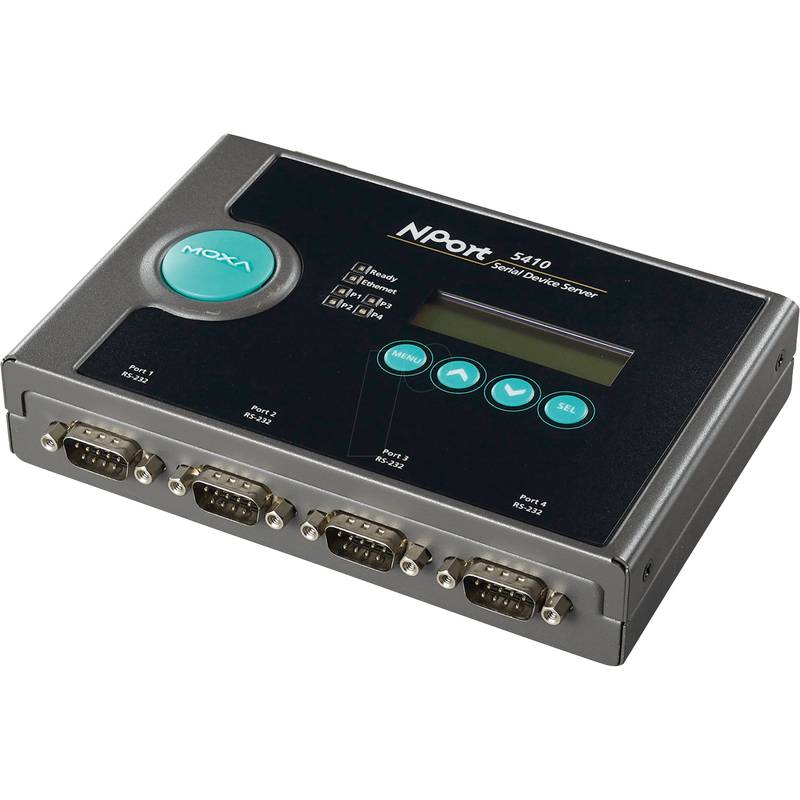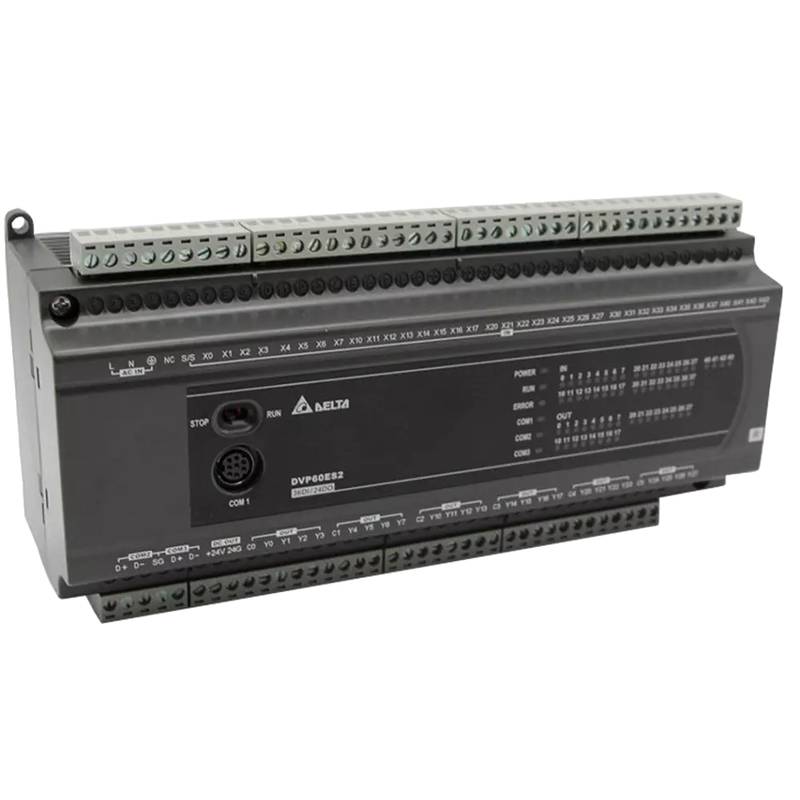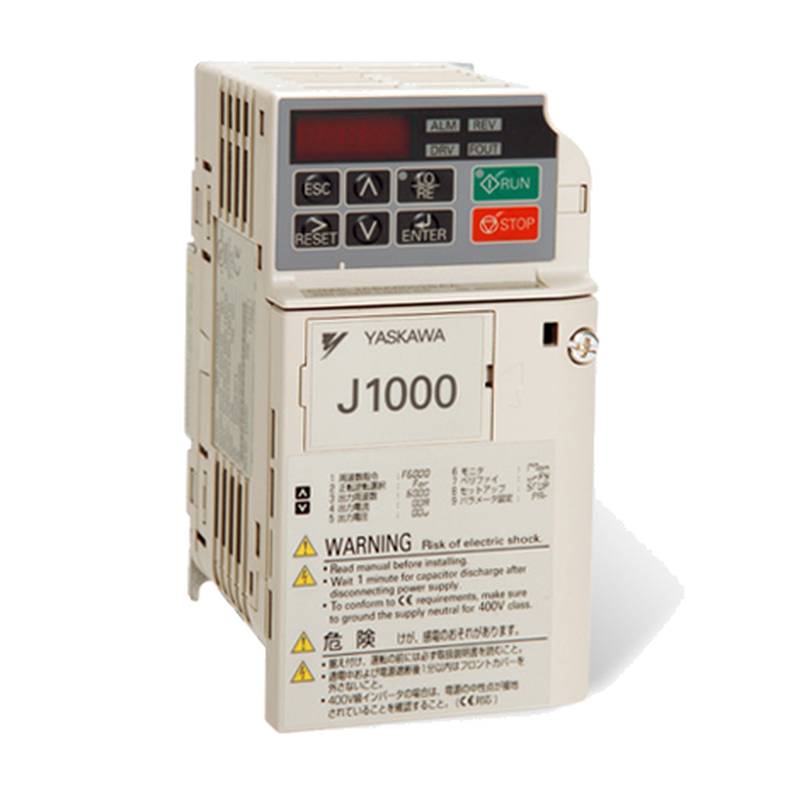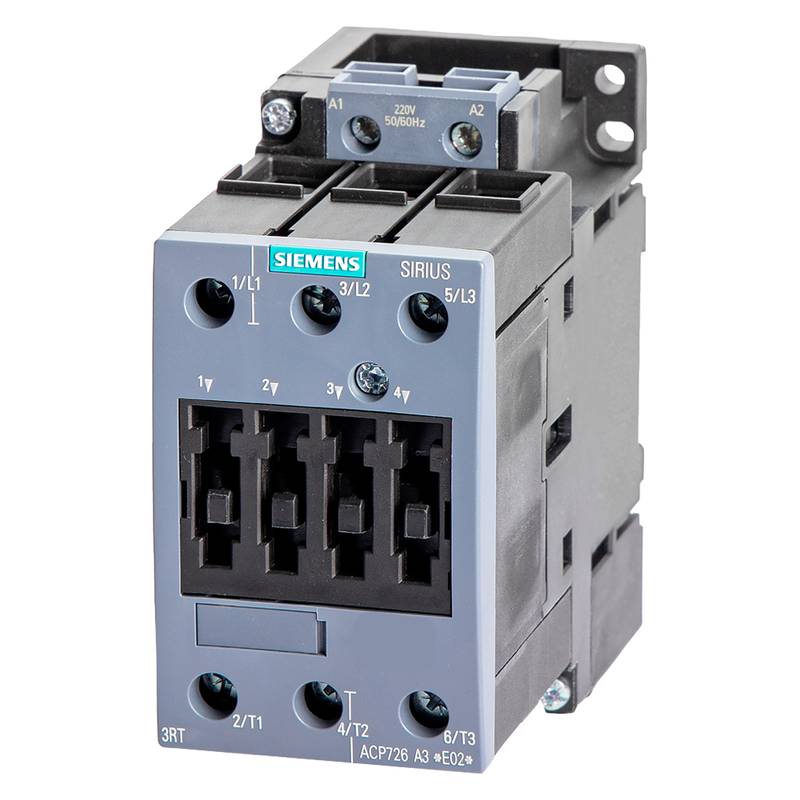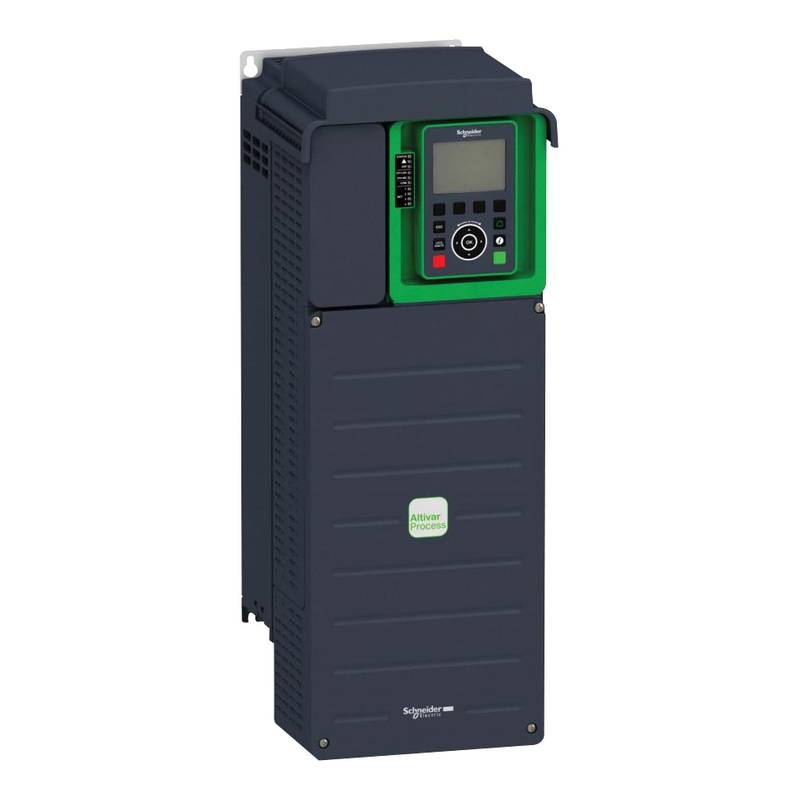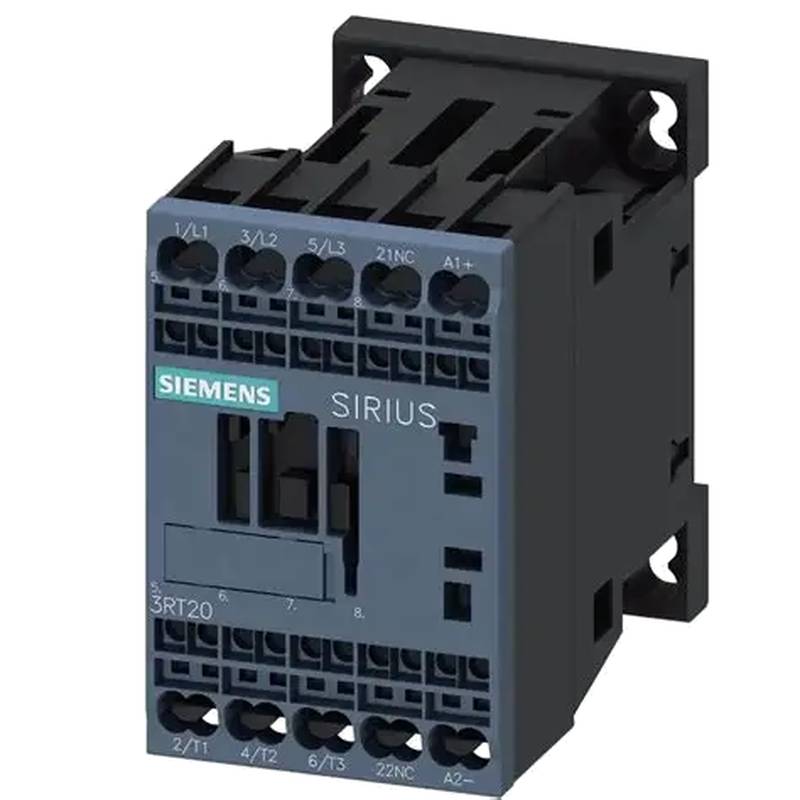
The Moxa NPort 5430I Industrial Grade Isolated Serial Device Server is engineered for robust and reliable serial-to-Ethernet communication in demanding industrial environments. This device server offers four RS-232/422/485 serial ports, ensuring versatile connectivity for a wide array of legacy and modern industrial equipment. Its key advantages include industrial-grade isolation, providing essential protection against electrical surges and ground loops, thereby enhancing system stability and longevity. The NPort 5430I boasts a ruggedized metal housing, wide operating temperature range, and dual power inputs for enhanced reliability, making it an ideal solution for critical automation tasks. Technical parameters include a 10/100 Mbps Ethernet interface, support for TCP/IP, UDP/IP, and HTTP protocols, and a comprehensive suite of operating system compatibility.
Product Specifications
| Feature | Specification |
| :--------------------- | :----------------------------------------------- |
| Serial Ports | 4 x RS-232/422/485 (DB9 male connectors) |
| Ethernet Interface | 1 x 10/100 Mbps auto-MDI/MDIX Ethernet port (RJ45) |
| Serial Data Rates | 50 bps to 921.6 kbps |
| Serial Port Protection | 2 kV isolation |
| Power Input | 12-48 VDC (Dual power inputs) |
| Operating Temperature | -40 to 75 °C |
| Dimensions | 165 x 145 x 49 mm |
| Mounting | DIN-rail, Wall-mount |
| Protocol Support | TCP/IP, UDP/IP, HTTP, DHCP, BOOTP, Telnet, DNS |
Core Features & Market Positioning
The Moxa NPort 5430I stands out in the industrial device server market due to its superior isolation capabilities, offering 2 kV of protection on each serial port. This critical feature safeguards sensitive control systems from voltage spikes and electrical noise prevalent in industrial settings, a significant differentiator from standard device servers. Its robust construction, designed to withstand extreme temperatures (-40 to 75 °C) and harsh environmental conditions, positions it as a premier choice for sectors like manufacturing, utilities, and transportation. The NPort 5430I supports Moxa's patented Turbo Ring and Turbo Chain technologies, enabling rapid network recovery times essential for mission-critical applications where downtime is unacceptable. This combination of ruggedness, advanced networking features, and comprehensive serial port protection underpins its value proposition as a highly reliable industrial connectivity solution.
Key Application Scenarios
Industrial automation professionals frequently deploy the Moxa NPort 5430I for applications requiring the seamless integration of serial devices into Ethernet networks. This includes connecting Programmable Logic Controllers (PLCs) from various vendors, such as Siemens, Allen-Bradley, and Mitsubishi, to a central SCADA system for real-time monitoring and control. Another common use case involves linking legacy serial-based instrumentation, like temperature sensors, flow meters, and barcode scanners, to modern data acquisition platforms, enabling enhanced data logging and analysis. Furthermore, the NPort 5430I is vital in utility sectors for remote monitoring of substations and control of field devices, where its industrial-grade isolation and wide operating temperature range ensure continuous operation even in challenging outdoor environments.
Practical System Integration Guidance
Integrating the Moxa NPort 5430I into existing industrial networks is straightforward, primarily involving configuration of its network and serial port settings. Initial setup typically begins with assigning an IP address to the device server, either statically or dynamically via DHCP. For serial port configuration, users must specify the communication parameters (baud rate, data bits, parity, stop bits) to match the connected serial devices. Moxa provides a powerful Windows-based utility, Moxa PComm Plus, which simplifies the discovery and configuration of NPort devices on the network, allowing for quick adjustments to IP addresses, serial settings, and operating modes such as TCP Server, TCP Client, UDP, or Real COM. For wiring, RS-485 connections benefit from proper termination resistors, and RS-232 connections utilize standard DB9 male connectors, ensuring robust signal integrity.
Operation and Risk Mitigation
Operating the Moxa NPort 5430I requires attention to network configuration and serial port settings to prevent communication errors and ensure system stability. A common operational pitfall is mismatched serial parameters between the device server and the connected equipment, which can lead to data corruption or complete communication failure. To mitigate this, meticulously verify baud rates, parity, and flow control settings for all connected serial devices. Network configuration risks, such as IP address conflicts, can be avoided by using a network management system or adhering to a defined IP addressing scheme. For risk mitigation, the NPort 5430I's built-in 2 kV isolation is crucial for preventing damage from power surges or ground loops; ensuring proper grounding of the device and connected equipment further enhances this protection. Regular firmware updates from Moxa are recommended to address potential security vulnerabilities and improve overall performance.
Scalability & Long-Term Value
The Moxa NPort 5430I offers significant scalability and long-term value, particularly within the context of industrial Ethernet and the Industrial Internet of Things (IIoT). Its ability to convert up to four serial devices to Ethernet simultaneously allows for efficient expansion of existing serial-based systems without requiring costly hardware replacements. The NPort 5430I integrates seamlessly with Moxa's broader portfolio of industrial networking solutions, enabling the creation of scalable and interconnected automation architectures. Furthermore, its compatibility with various operating modes and protocols facilitates integration into diverse IIoT platforms, allowing for remote data access, cloud connectivity, and advanced analytics. This future-proof design ensures that the NPort 5430I remains a relevant and valuable component as industries continue their digital transformation journeys.
Frequently Asked Questions
How do I configure the serial port settings on the Moxa NPort 5430I?
To configure serial port settings, access the NPort 5430I's web interface or use Moxa's Device Search utility. Navigate to the serial port settings section for each of the four ports.
Here, you will specify parameters such as baud rate, data bits, parity, stop bits, and flow control to match the connected serial device. Ensure these settings precisely align with the requirements of your industrial equipment for successful communication.
Accurate configuration is paramount; any mismatch can lead to data transmission errors or a complete loss of connectivity. Always consult the serial device's manual for its specific communication parameters.
What is the warranty period for the Moxa NPort 5430I?
The Moxa NPort 5430I typically comes with a comprehensive warranty that underscores Moxa's commitment to product reliability. Moxa generally offers a standard warranty period for its industrial networking products, often lasting for several years.
Specific warranty terms and duration may vary slightly based on region and the purchasing channel. It is advisable to confirm the exact warranty details with your authorized Moxa distributor or reseller at the time of purchase.
This warranty provides peace of mind, covering defects in materials and workmanship under normal operating conditions and ensuring continued support for your critical industrial applications.
Can the Moxa NPort 5430I be used with Modbus TCP/IP?
Yes, the Moxa NPort 5430I fully supports Modbus TCP/IP communication. This functionality allows you to bridge Modbus serial devices, such as RTUs, to an Ethernet network where Modbus TCP/IP is the standard.
The device server acts as a gateway, translating Modbus serial frames into Modbus TCP packets and vice-versa. This enables SCADA systems or other Ethernet-based controllers to communicate with your existing Modbus serial equipment seamlessly.
Leveraging the NPort 5430I for Modbus TCP/IP integration simplifies network architecture and extends the reach of your automation systems without replacing field devices.
How does the industrial-grade isolation protect my equipment?
The 2 kV isolation feature on each serial port of the NPort 5430I provides a critical barrier against electrical disturbances. This isolation prevents damaging voltage surges, transients, and ground loops from traveling between the serial device and the Ethernet network.
By electrically separating the serial port circuitry from the main system, it significantly reduces the risk of hardware failure caused by external electrical noise or potential differences between connected equipment. This is vital in environments with high electrical interference.
This protection enhances the overall reliability and longevity of both the NPort 5430I itself and the connected serial devices, minimizing costly downtime and maintenance.
What are the benefits of using dual power inputs on the NPort 5430I?
The dual power inputs on the Moxa NPort 5430I provide enhanced operational redundancy and system reliability. In industrial environments, power supply stability is crucial, and having two independent power sources minimizes the risk of system failure.
If one power supply experiences an issue, such as a failure or fluctuation, the NPort 5430I can seamlessly continue to operate using the secondary power input. This failover capability is essential for mission-critical applications where uninterrupted service is paramount.
This feature ensures continuous connectivity for your serial devices, preventing data loss and operational disruptions, thereby contributing to a more robust and dependable industrial network infrastructure.
Is the Moxa NPort 5430I compatible with older serial devices?
Absolutely, the Moxa NPort 5430I is specifically designed to bridge legacy serial devices with modern Ethernet networks. It supports RS-232, RS-422, and RS-485 interfaces, covering a vast range of older industrial equipment.
The device server allows you to extend the life of your existing serial hardware by enabling them to communicate over standard Ethernet. This avoids the need for costly and time-consuming replacement of functional, yet outdated, serial equipment.
By simply connecting your older serial devices to the NPort 5430I, you can integrate them into your IP-based network for remote monitoring, control, and data acquisition.
What is the typical Ethernet connection interface used by the NPort 5430I?
The Moxa NPort 5430I utilizes a standard RJ45 connector for its Ethernet interface. This port supports 10/100 Mbps auto-negotiation, making it compatible with most industrial Ethernet switches and network infrastructure.
The auto-MDI/MDIX feature on the Ethernet port eliminates the need for crossover cables, simplifying network connections. You can use either a straight-through or a crossover Ethernet cable to connect the NPort to your network switch or directly to a computer.
This standard interface ensures easy integration into existing network setups and simplifies troubleshooting, as RJ45 is the ubiquitous connector for Ethernet networking.
How does the wide operating temperature range benefit industrial applications?
The wide operating temperature range of -40 to 75 °C is critical for industrial applications where equipment is often deployed in harsh or uncontrolled environments. This capability ensures reliable operation in locations such as outdoor enclosures, unheated factories, or areas subject to extreme temperature fluctuations.
Standard commercial devices would likely fail under such conditions, leading to costly downtime and maintenance. The NPort 5430I's robust design allows it to maintain consistent performance and connectivity regardless of ambient temperature extremes.
This inherent resilience makes the NPort 5430I an ideal choice for critical infrastructure, remote monitoring stations, and any application where environmental conditions pose a challenge to equipment reliability.
What are the different operating modes available for the NPort 5430I?
The Moxa NPort 5430I supports several versatile operating modes to suit diverse network architectures. These include TCP Server, TCP Client, UDP (Unicast/Multicast), and Real COM modes.
In TCP Server mode, the NPort listens for incoming connections from clients. TCP Client mode allows the NPort to initiate connections to a specified server. UDP mode offers connectionless communication, suitable for broadcasting or simple data transfer.
Real COM mode, a proprietary Moxa feature, creates virtual COM ports on a host PC, enabling applications designed for serial communication to work seamlessly over Ethernet without modification.
Can the NPort 5430I be mounted on a DIN rail?
Yes, the Moxa NPort 5430I is designed for straightforward industrial mounting, including DIN rail installation. It typically comes with integrated mounting hardware or brackets that facilitate easy attachment to standard 35mm DIN rails.
This mounting option is widely adopted in industrial control cabinets and electrical panels, allowing for organized and secure installation of networking equipment alongside other components. The robust design ensures stability even in environments prone to vibration.
Additionally, wall-mount accessories are often available, providing flexibility in deployment where DIN rail mounting is not feasible, further enhancing its adaptability to various industrial cabinet configurations.














